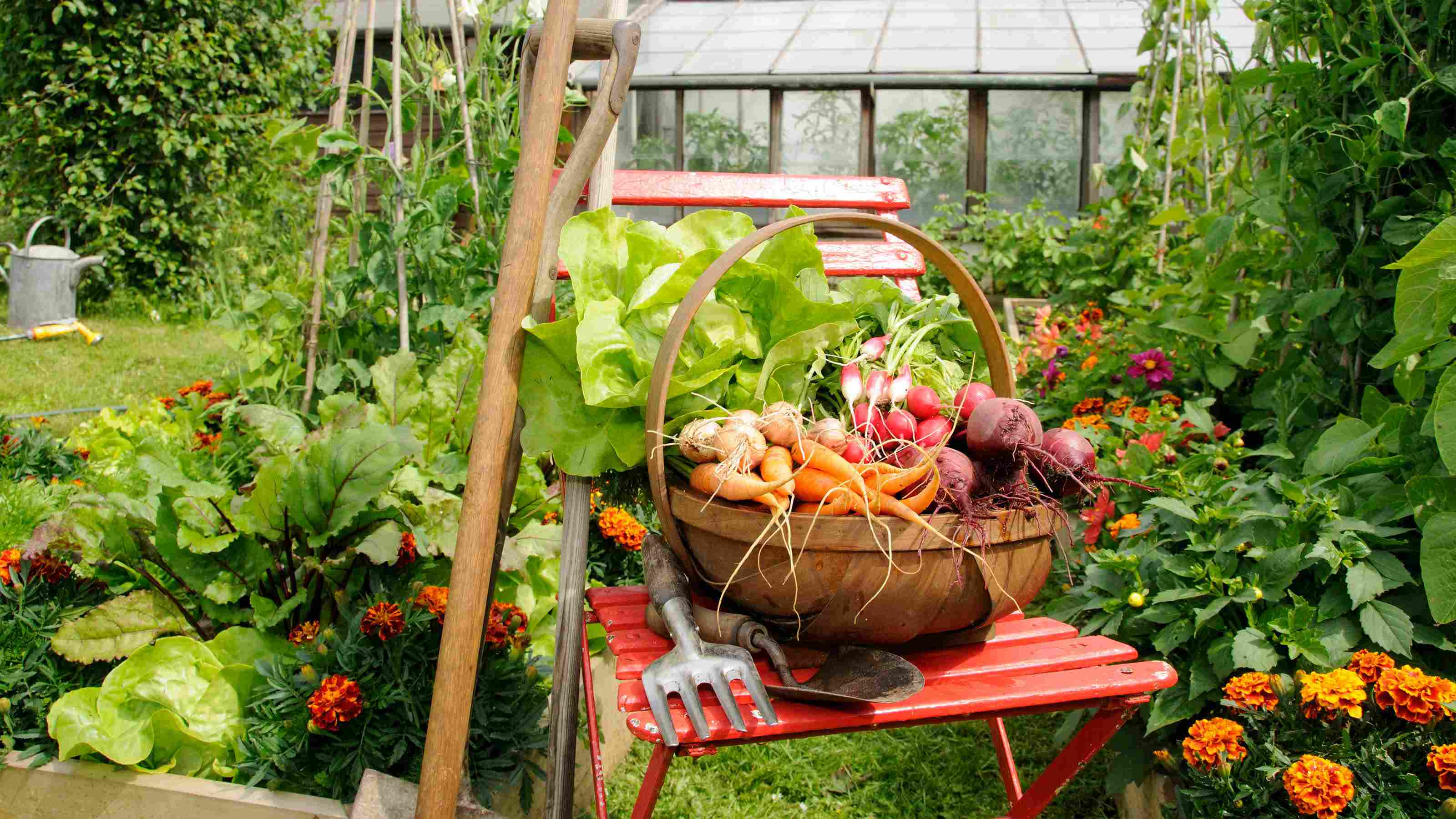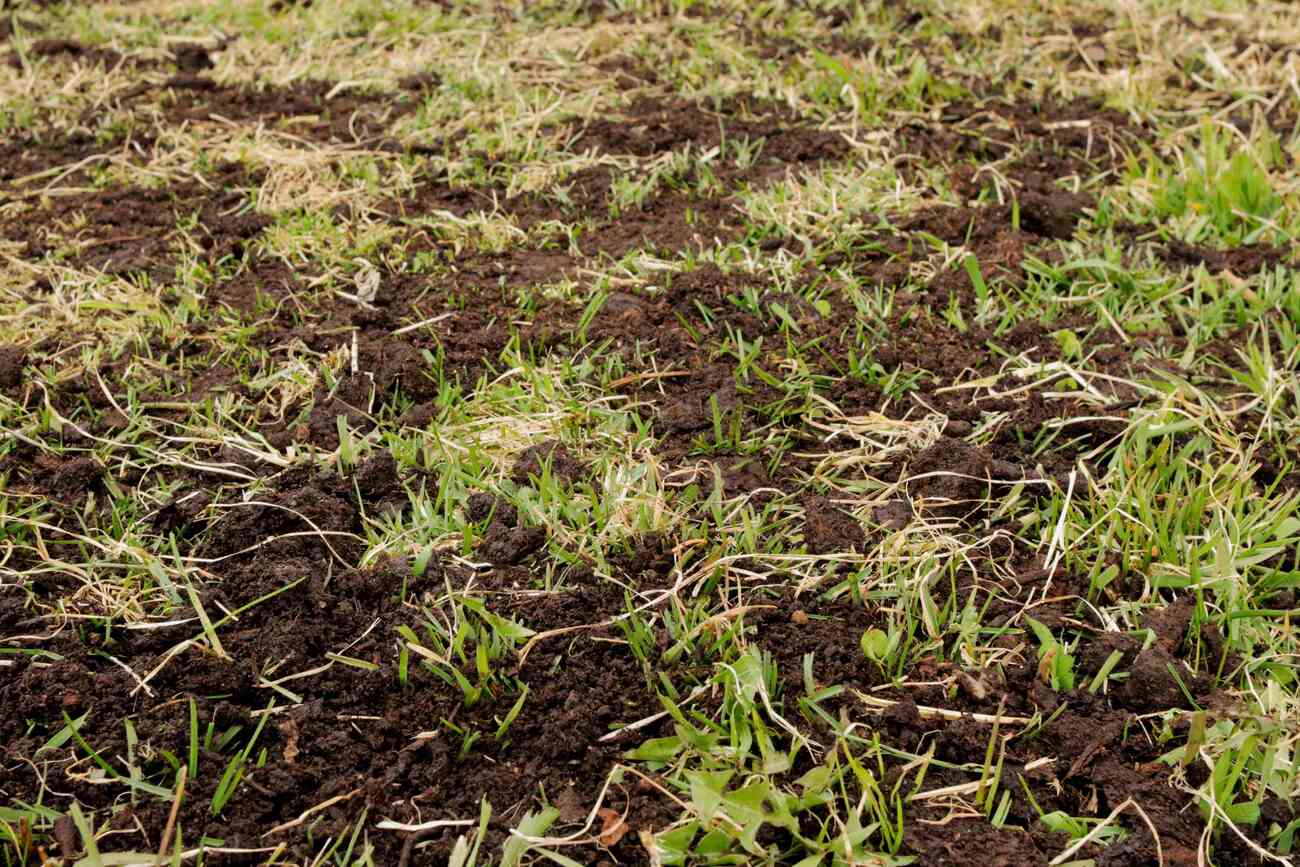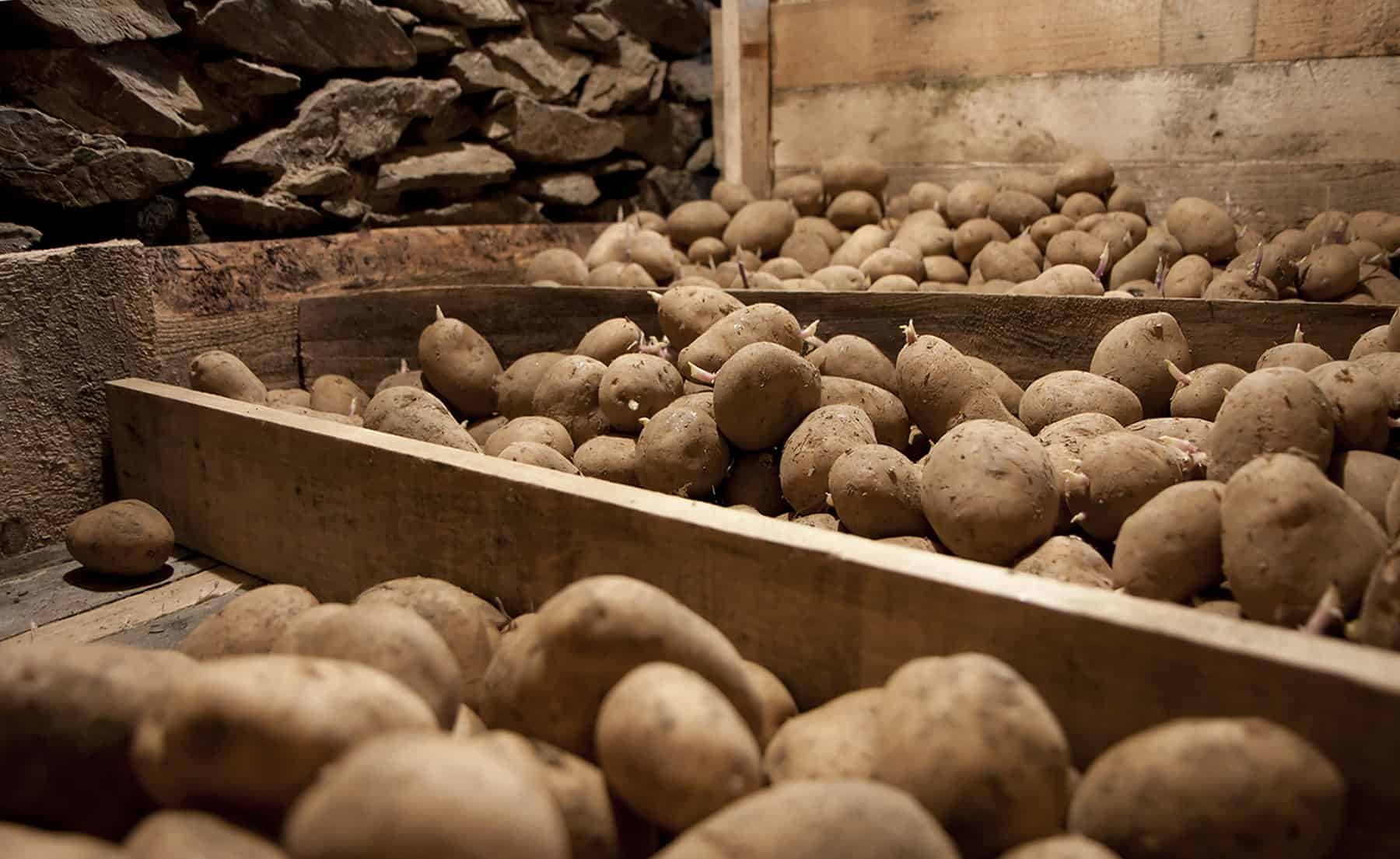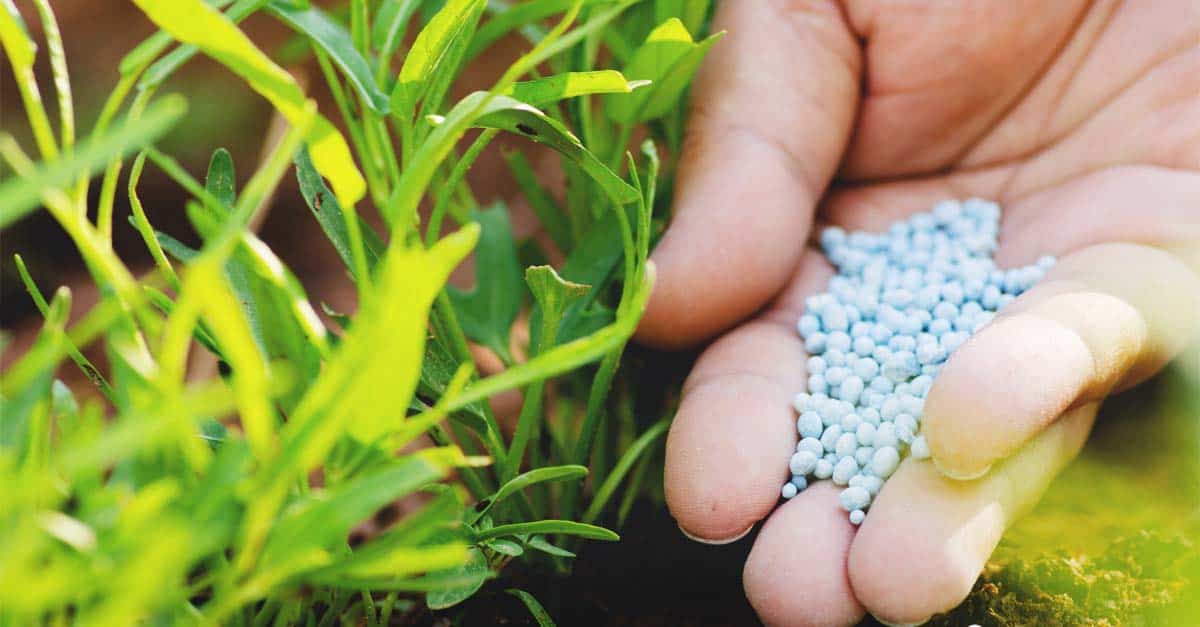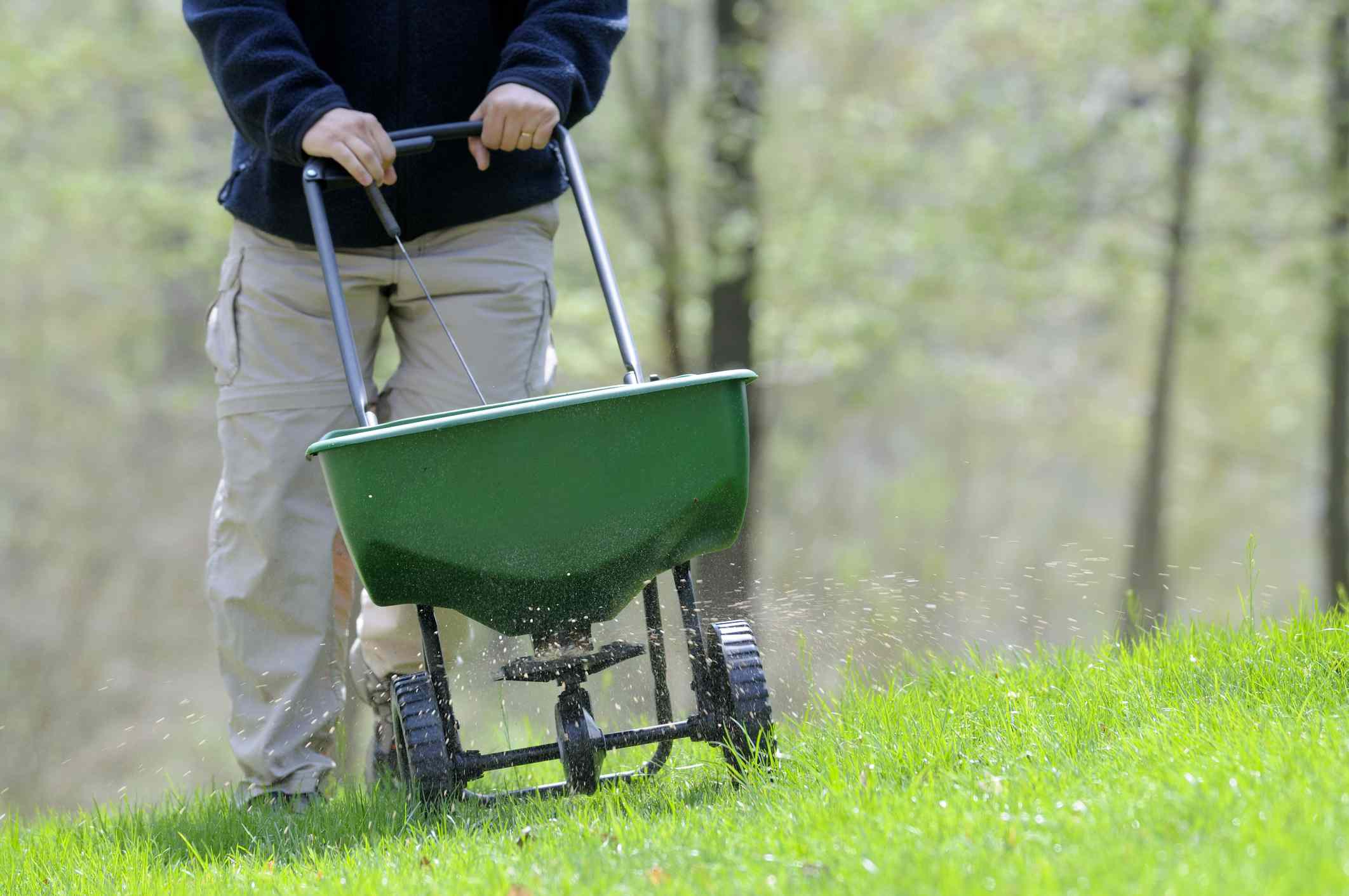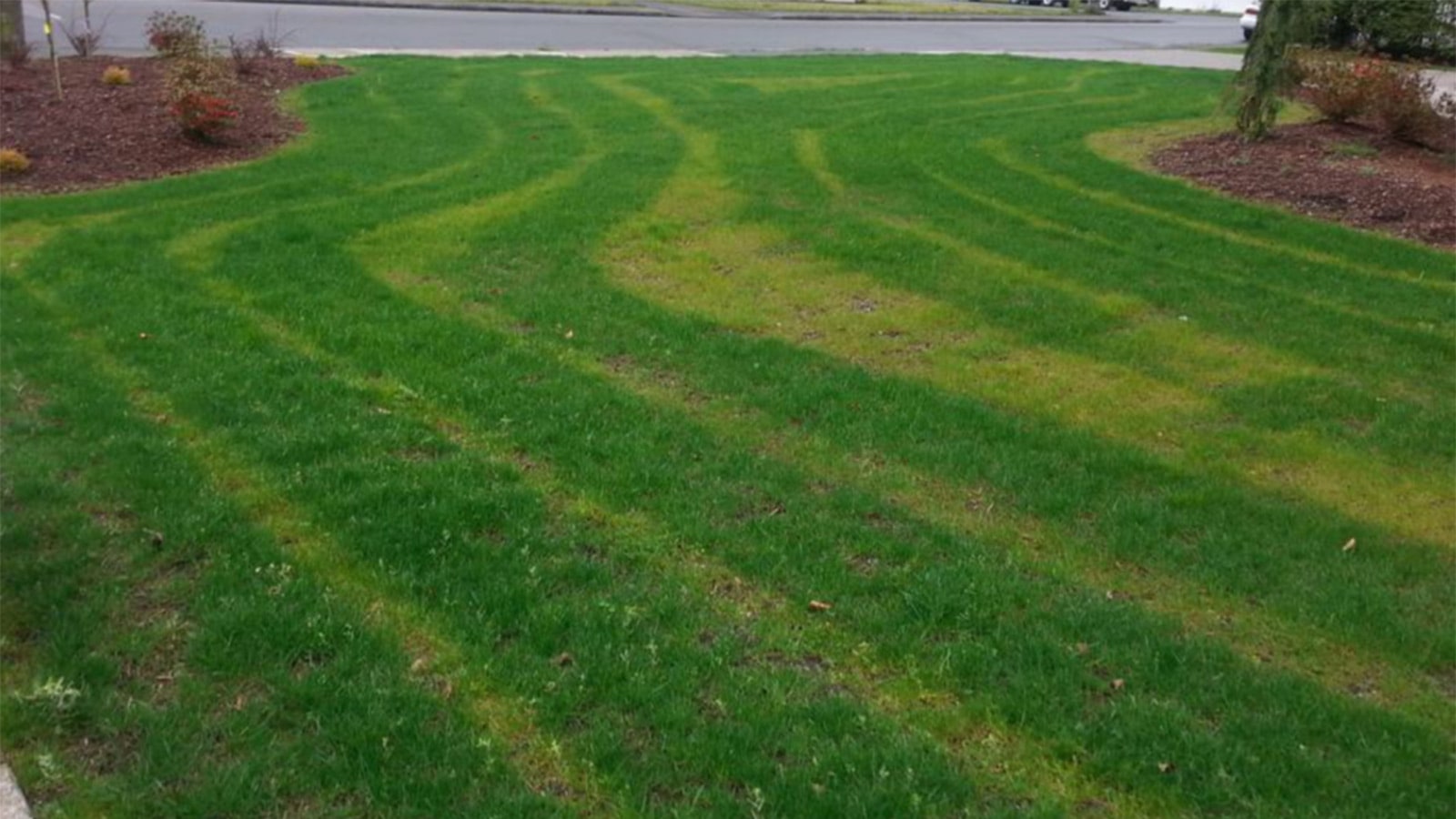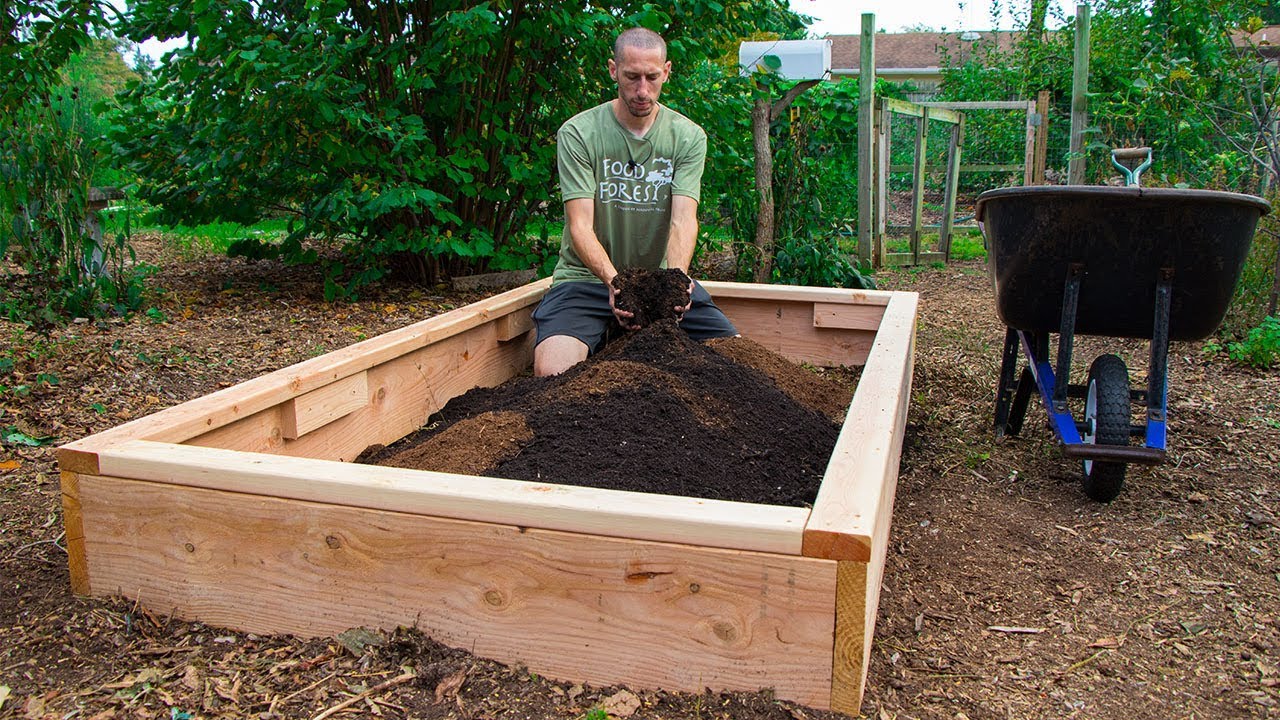Home>Gardening Techniques>When To Apply Fertilizer To Vegetable Garden
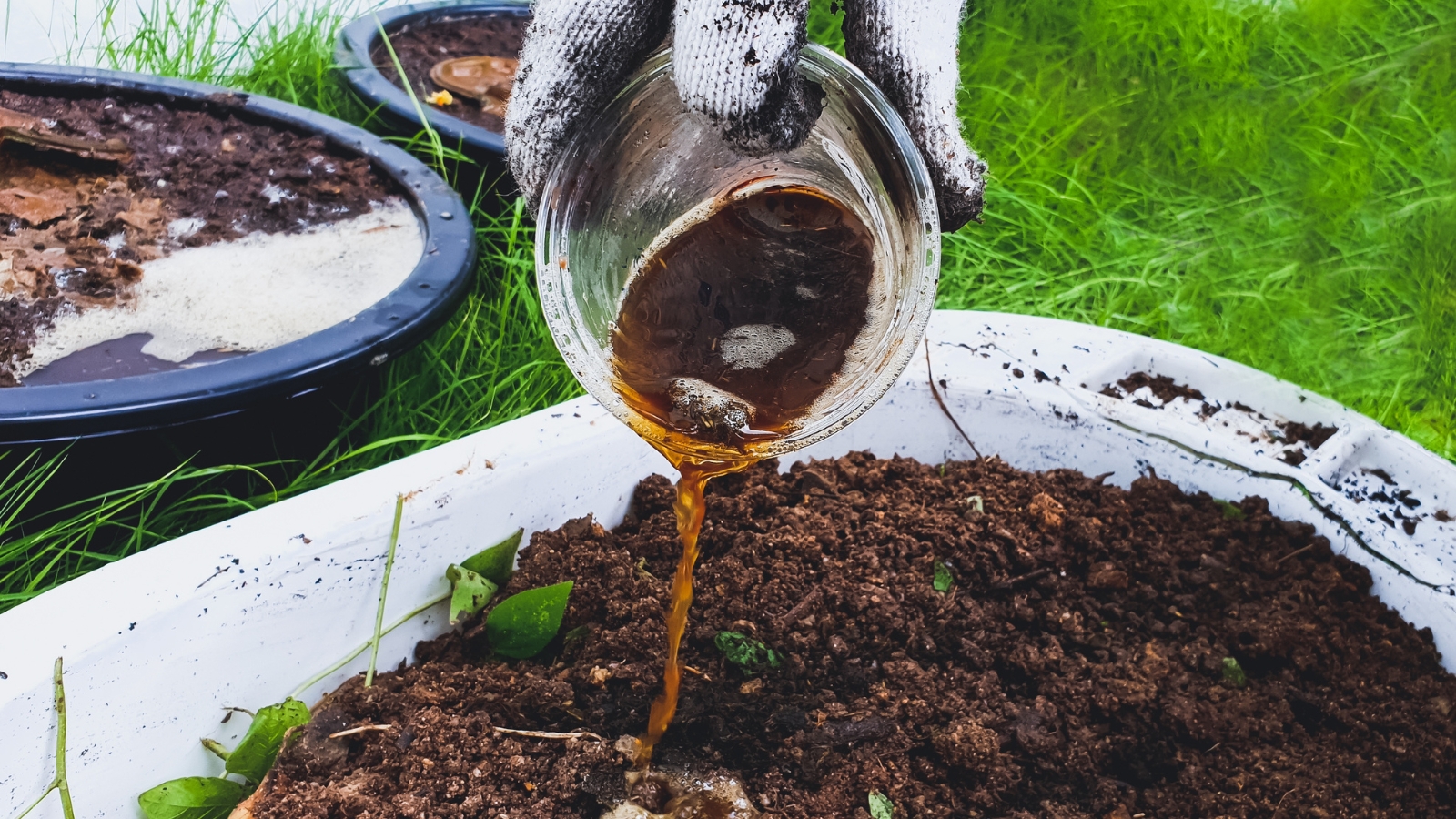

Gardening Techniques
When To Apply Fertilizer To Vegetable Garden
Modified: January 22, 2024
Learn when is the best time to apply fertilizer to your vegetable garden for optimal plant care. Find out the right schedule and tips for a successful harvest.
(Many of the links in this article redirect to a specific reviewed product. Your purchase of these products through affiliate links helps to generate commission for Chicagolandgardening.com, at no extra cost. Learn more)
Table of Contents
- Introduction
- Importance of Fertilizing Vegetable Gardens
- Factors to Consider Before Applying Fertilizer
- Understanding Soil Nutrient Needs
- Types of Fertilizers for Vegetable Gardens
- General Guidelines for Fertilizer Application
- Best Time to Apply Fertilizer to Vegetable Garden
- Significance of Pre-Planting Fertilization
- Fertilizing during the Growing Season
- Signs of Over-fertilization
- Conclusion
Introduction
Welcome to the world of vegetable gardening! Whether you are a seasoned gardener or just starting out, understanding the importance of fertilizer is crucial for the success of your vegetable garden. Fertilizing your plants provides essential nutrients that they need to grow strong and produce a bountiful harvest.
Proper fertilization not only promotes healthy plant growth but also improves soil fertility, leading to better nutrient uptake and increased resistance to pests and diseases. However, it’s important to know when and how to apply fertilizer to maximize its benefits while avoiding potential negative effects.
In this article, we will explore the best times to apply fertilizer to your vegetable garden, taking into account various factors such as the type of fertilizer, soil nutrient needs, and the growth stage of your plants. By following these guidelines, you’ll be on your way to growing thriving and productive vegetables in no time.
Before we dive into the specific timings and methods, let’s first understand why fertilizing your vegetable garden is so important and how it can transform your gardening experience.
Importance of Fertilizing Vegetable Gardens
Fertilizing your vegetable garden is essential for the overall health and vitality of your plants. Here are some key reasons why fertilization is crucial:
- Nutrient replenishment: As plants grow and produce fruits and vegetables, they deplete the soil of essential nutrients. Fertilizers help to replenish these nutrients, ensuring that your plants have all the necessary elements for healthy growth and development.
- Enhanced plant growth: Fertilizers provide a concentrated source of nutrients that can help stimulate plant growth. With the right combination of macro and micronutrients, your vegetables can grow lusher, taller, and produce higher yields.
- Improved soil fertility: Fertilizers not only benefit the plants directly but also contribute to the overall fertility of the soil. Over time, regular fertilization can help improve the soil’s structure, water-holding capacity, and nutrient-retaining abilities.
- Increased disease resistance: Nutrient-deficient plants are more susceptible to diseases and pests. By ensuring your vegetables receive the proper nutrition, you can strengthen their immune systems, making them more resistant to common garden pests and diseases.
- Optimal nutrient uptake: Different types of vegetables have varying nutrient requirements. Carefully selecting the right fertilizer and applying it at the appropriate times can ensure that your plants are receiving the specific nutrients they need to thrive.
By fertilizing your vegetable garden, you can create an environment that fosters healthy growth, abundant yields, and vibrant colors. However, it’s important to consider several factors before applying fertilizers to your garden, which we will explore in the next section.
Factors to Consider Before Applying Fertilizer
Before you start applying fertilizer to your vegetable garden, there are several important factors to consider. Taking these factors into account will help you determine the appropriate type and amount of fertilizer to use. Here are the key factors to keep in mind:
- Soil composition: Understanding the composition of your soil is crucial for effective fertilization. Conducting a soil test can provide you with valuable information about the pH level, nutrient content, and organic matter present in your soil. This information will guide you in choosing the right fertilizer formulation to address any deficiencies.
- Plant nutrient requirements: Different types of vegetables have varying nutrient requirements. Leafy vegetables, for example, may require more nitrogen for foliage development, while fruiting vegetables benefit from higher levels of phosphorus and potassium. Understanding the specific needs of your plants will help you select a fertilizer that provides the appropriate balance of nutrients.
- Fertilizer type: There are various types of fertilizers available, including organic and synthetic options. Organic fertilizers are derived from natural sources and release nutrients slowly over time, while synthetic fertilizers are chemically formulated for faster nutrient availability. Consider the pros and cons of each type and choose one that aligns with your gardening goals and values.
- Timing: Timing plays a crucial role in fertilizer application. Applying fertilizer too early or too late can be ineffective or even harmful to your plants. Understanding the growth stages of your vegetables and when they require the most nutrients will help you determine the optimal time for fertilizer application.
- Environmental factors: Environmental factors such as temperature, rainfall, and sunlight can impact nutrient availability and uptake. Adjusting your fertilization schedule based on these factors will ensure that your plants receive the right nutrients at the right time.
By considering these factors, you can make informed decisions about fertilizer application in your vegetable garden. In the next section, we will delve into the specific nutrient needs of different types of vegetables and how to meet those needs through fertilization.
Understanding Soil Nutrient Needs
Understanding the nutrient needs of your soil is essential for providing your vegetables with the necessary elements for healthy growth. By conducting a soil test and analyzing the results, you can determine which nutrients may be lacking and make informed decisions about fertilization. Here are the key nutrients and their roles:
- Nitrogen (N): Nitrogen is crucial for promoting lush green foliage and vigorous plant growth. It plays a vital role in photosynthesis and protein synthesis. Nitrogen deficiency can result in stunted growth and yellowing leaves.
- Phosphorus (P): Phosphorus is essential for root development, flowering, and fruit production. It supports energy transfer and nutrient utilization within the plant. Inadequate phosphorus levels can lead to poor flowering and reduced fruit set.
- Potassium (K): Potassium is important for overall plant health and disease resistance. It aids in water and nutrient movement within the plant and regulates important physiological processes. Insufficient potassium can result in weakened plants and increased susceptibility to stress and diseases.
- Calcium (Ca): Calcium contributes to cell wall strength and helps prevent disorders such as blossom end rot in tomatoes and peppers. It also plays a role in nutrient uptake and transport within the plant.
- Magnesium (Mg): Magnesium is an essential component of chlorophyll and is involved in photosynthesis. It is important for maintaining healthy leaves and promoting vibrant green coloration. Deficiencies can lead to yellowing between leaf veins.
- Sulfur (S): Sulfur is necessary for protein synthesis and enzyme activity. It aids in the formation of vitamins, amino acids, and oil compounds. Sulfur deficiency can result in pale or yellowish leaves and reduced plant vigor.
While these macronutrients are crucial for plant growth, your soil may also require essential micronutrients like iron, manganese, zinc, and copper. Conducting a soil test will indicate if any micronutrients are deficient and need to be supplemented through fertilization.
By understanding the specific nutrient needs of your soil, you can choose a fertilizer formulation that provides the appropriate balance of nutrients. In the next section, we will explore different types of fertilizers suitable for vegetable gardens.
Types of Fertilizers for Vegetable Gardens
When it comes to fertilizing your vegetable garden, there are several types of fertilizers to choose from. Each type has its own advantages and considerations, depending on your gardening preferences and the specific needs of your plants. Here are the most common types of fertilizers for vegetable gardens:
- Organic Fertilizers: Organic fertilizers are derived from natural sources such as compost, manure, and plant-based materials. They release nutrients slowly as they break down, providing a gradual and consistent supply of nutrients to the plants. Organic fertilizers improve soil fertility, promote beneficial microbial activity, and enhance overall soil health.
- Synthetic (Inorganic) Fertilizers: Synthetic fertilizers are commercially formulated and contain specific ratios of essential nutrients. They are usually available in granular or liquid form. Synthetic fertilizers provide a quick nutrient boost to plants and are easily absorbed. However, they can be more prone to leaching and can have a negative impact on soil health if not used properly.
- Slow-Release Fertilizers: Slow-release fertilizers deliver nutrients gradually over an extended period. They are often coated or infused with a material that controls the release rate, ensuring that nutrients are available to plants over several weeks or months. Slow-release fertilizers are convenient for those who prefer a set-it-and-forget-it approach to fertilization.
- Water-Soluble Fertilizers: Water-soluble fertilizers come in a powdered or liquid form that dissolves easily in water. They provide a quick and readily available source of nutrients that can be applied through watering or foliar sprays. Water-soluble fertilizers are convenient for container gardens or when immediate nutrient uptake is required.
- Complete Fertilizers: Complete fertilizers contain all three major nutrients – nitrogen, phosphorus, and potassium – in varying ratios. They provide a balanced nutrient profile to support overall plant growth and development. Complete fertilizers are often labeled with an NPK ratio, indicating the percentage of each nutrient present.
When selecting a fertilizer for your vegetable garden, consider factors such as nutrient content, application method, and the specific needs of your plants. Organic fertilizers are a popular choice for those seeking a sustainable and environmentally friendly option. However, synthetic fertilizers can be more convenient and provide a quick nutrient boost when needed.
Remember to always read and follow the instructions on the fertilizer packaging to ensure proper application rates and minimize the risk of over-fertilization. In the next section, we will discuss general guidelines for applying fertilizers to your vegetable garden.
General Guidelines for Fertilizer Application
When it comes to fertilizing your vegetable garden, there are some general guidelines to keep in mind to ensure effective and safe application. These guidelines will help you optimize nutrient uptake, minimize the risk of over-fertilization, and promote healthy plant growth. Here are some key considerations:
- Read and follow instructions: Always read and follow the instructions provided on the fertilizer packaging. Pay attention to the recommended application rates, frequency, and any specific instructions for your type of vegetables.
- Apply fertilizer evenly: Distribute the fertilizer evenly across your garden beds to ensure that all plants receive an equal amount of nutrients. Avoid applying excessive amounts in one area, as this can lead to nutrient imbalances and potential plant damage.
- Water before and after application: Water the soil lightly before applying fertilizer. This helps dissolve the fertilizer and aids in nutrient absorption. After applying the fertilizer, water the soil again to ensure that the nutrients reach the plant roots.
- Apply at the right time: Timing is important when it comes to fertilizer application. Apply fertilizers when plants are actively growing and in need of nutrients. For many vegetables, this is during the early stages of growth, as well as during flowering and fruiting.
- Avoid direct contact with plant tissue: Keep the fertilizer away from direct contact with plant stems, leaves, and fruits. Direct contact can cause burning or damage to the plant tissue. Spread the fertilizer around the base of the plants instead.
- Regularly monitor plant response: Pay attention to how your plants respond to fertilization. Observe their growth, leaf color, and overall health. If you notice signs of over-fertilization or nutrient deficiencies, adjust your fertilization practices accordingly.
- Consider supplemental feeding: As your plants grow, they may require additional nutrient boosts. Consider supplementing with liquid fertilizers or foliar sprays to provide extra nutrients during critical growth stages.
Remember, it’s important to strike a balance with fertilizer application. Too little fertilizer may lead to nutrient deficiencies, while too much can result in fertilizer burn or environmental pollution. Regular soil testing can help you determine if any adjustments need to be made to your fertilization practices.
By following these general guidelines, you can ensure that your vegetable plants receive the nutrients they need for healthy growth and abundant yields. In the next section, we will discuss the best time to apply fertilizer to your vegetable garden.
Best Time to Apply Fertilizer to Vegetable Garden
The timing of fertilizer application is crucial to provide your vegetables with the nutrients they need at the right stages of growth. By understanding the growth patterns of your plants and their nutrient requirements, you can determine the best time to apply fertilizer to your vegetable garden. Here are some key considerations:
- Pre-planting fertilization: Before you plant your vegetables, it’s beneficial to incorporate fertilizers into the soil. This helps establish a nutrient-rich foundation for your plants. Apply organic matter, such as compost or well-rotted manure, to enrich the soil and improve its structure.
- Side-dressing during the growing season: Many vegetables benefit from additional nutrient supplementation during their active growth stages. Side-dressing refers to the application of fertilizers alongside the plants, away from the base, during the growing season. This helps replenish nutrients as the plants continue to take up and deplete the soil’s nutrient reserves.
- Fertilizing flowering and fruiting plants: Vegetables that produce flowers and fruits, such as tomatoes or peppers, benefit from extra phosphorus and potassium during these stages. Apply a balanced fertilizer, specifically formulated for fruiting plants, when they start to flower and continue throughout the fruiting period.
- Regular feeding for heavy feeders: Some vegetables are considered heavy feeders, meaning they require more nutrients than others. Crops like corn, cabbage, and squash fall into this category. For heavy feeders, consider providing regular feedings during the growing season to ensure they have an ample supply of nutrients.
- Consider a foliar spray: In addition to soil application, foliar spraying can be beneficial for quick nutrient uptake. Foliar sprays involve applying diluted liquid fertilizers directly to the leaves of the plants. This method is especially useful for correcting nutrient deficiencies or providing an extra nutrient boost during critical growth stages.
The timing and frequency of fertilizer application may vary depending on the specific vegetables you are growing and the climate of your region. It’s important to consult seed catalogs, gardening resources, and local agricultural extension services for more specific guidelines tailored to your area.
Remember to always water your plants immediately after fertilization to allow for proper nutrient absorption. Regularly monitor your plants for signs of nutrient deficiencies or over-fertilization. Adjust your fertilization schedule as needed to ensure optimal plant growth and yield.
Now that you have a better understanding of the best timing for fertilizer application, let’s explore the significance of pre-planting fertilization in the next section.
Significance of Pre-Planting Fertilization
Pre-planting fertilization is a critical step in setting the stage for a successful vegetable garden. By incorporating fertilizers into the soil before planting, you provide essential nutrients that will support your plants’ growth and development throughout the season. Here are some key reasons why pre-planting fertilization is significant:
- Soil enrichment: Pre-planting fertilization helps enrich the soil with essential nutrients that may be lacking. Adding organic matter, such as compost or well-rotted manure, improves soil structure, nutrient holding capacity, and microbial activity. This creates a favorable environment for plant roots to grow, access nutrients, and establish themselves effectively.
- Initial nutrient availability: Fertilizing before planting ensures that nutrients are available to the young plants from the moment they are transplanted or emerge from seeds. This early nutrient supply promotes vigorous root development and allows the plants to establish themselves quickly.
- Root system support: Pre-planting fertilization encourages healthy root growth, which is crucial for nutrient uptake. Nutrient-rich soil provides the necessary fuel for root development, helping plants establish a robust root system that can adequately support their growth and productivity.
- Overall plant health: By providing ample nutrients right from the start, pre-planting fertilization sets the stage for healthy plant growth. Nutrient-rich soil supports strong stem development, lush foliage, and improved resistance to pests and diseases. This contributes to the long-term health and productivity of your vegetable garden.
- Improved crop yield: Pre-planting fertilization sets the foundation for higher crop yields. The increased nutrient availability in the soil ensures that plants have the resources they need to produce an abundant harvest. Properly fertilized soil can lead to larger, healthier fruits, and higher overall yield.
When preparing your vegetable garden for planting, take the time to incorporate organic matter and appropriate fertilizers into the soil. Consider conducting a soil test to determine any specific deficiencies or imbalances that need to be addressed. This will allow you to tailor the pre-planting fertilization to the specific needs of your soil and desired crops.
Remember to follow the recommended application rates and guidelines for the specific fertilizers you are using. Avoid over-fertilization, as this can lead to nutrient imbalances and potential harm to the plants.
By focusing on pre-planting fertilization, you provide your vegetable garden with the necessary nutrients for a strong and healthy start. As your plants continue to grow, it’s important to supplement their nutrient supply with appropriate fertilization during the growing season, which we will explore in the next section.
Fertilizing during the Growing Season
Fertilizing during the growing season is an important practice to ensure that your vegetable plants have a continuous supply of nutrients to support their growth and development. As the plants mature and begin to produce, their nutrient requirements increase. Here are some key considerations for fertilizing during the growing season:
- Monitor plant growth: Regularly monitor the growth and appearance of your plants throughout the growing season. Look for signs of nutrient deficiencies such as yellowing leaves, stunted growth, or poor fruit development. This will help guide your fertilization schedule and ensure that you address any nutrient deficiencies promptly.
- Choose the right fertilizer: Select a fertilizer that is appropriate for the specific needs of your vegetables. Consider their nutrient requirements and choose a fertilizer formulation that can provide a balanced supply of essential nutrients, including nitrogen, phosphorus, and potassium.
- Side-dress the plants: Side-dressing is a common method of fertilizing during the growing season. This involves applying the fertilizer alongside the plants, away from the base, and lightly incorporating it into the soil. This method ensures that nutrients are delivered directly to the plants’ root zones, where they are needed most.
- Timing is crucial: Timing is important when it comes to fertilizing during the growing season. Fertilize your vegetables when they are actively growing and in need of nutrients. Apply the fertilizer after watering to allow for proper nutrient absorption and minimize the risk of fertilizer burn.
- Follow application rates: Adhere to the recommended application rates provided by the fertilizer manufacturer. Over-fertilization can be detrimental to your plants and may result in nutrient imbalances or even plant damage. Moderation is key to ensuring that your plants receive the right amount of nutrients.
- Consider foliar feeding: Foliar feeding can be an effective way to supplement nutrients during the growing season. Dilute liquid fertilizer and apply it directly to the leaves, allowing for quick nutrient absorption. This method is particularly useful for correcting nutrient deficiencies or providing a boost during periods of high nutrient demand.
- Adjust for heavy feeders: Some vegetables are considered heavy feeders, meaning they require more nutrients than others. Crops such as corn, pumpkins, or tomatoes fall into this category. Consider providing additional feedings or increasing the nutrient concentration for these plants to support their high nutrient demands.
It’s important to strike a balance with fertilization during the growing season. Regularly monitor your plants and make adjustments to your fertilization practices as needed. Keep in mind that factors such as weather conditions, watering practices, and plant growth rates can affect nutrient availability and uptake.
By fertilizing appropriately during the growing season, you can provide your vegetable plants with the necessary nutrients to promote healthy growth, robust yields, and excellent overall plant health.
In the next section, we will discuss the signs of over-fertilization and how to avoid them, ensuring that you achieve optimal results in your vegetable garden.
Signs of Over-fertilization
While fertilizing your vegetable garden is important for plant health and productivity, it’s crucial to avoid over-fertilization. When excess fertilizer is applied, it can lead to nutrient imbalances, environmental pollution, and plant stress. Here are some signs to look out for that indicate over-fertilization:
- Leaf burn: One of the most common signs of over-fertilization is leaf burn. The edges or tips of the leaves may turn brown or yellowish, and in severe cases, the entire leaf may wither and die. Leaf burn can occur when fertilizer salts accumulate in the soil or when high concentrations of nutrients directly contact the plant tissue.
- Poor root development: Over-fertilization can hinder root development, resulting in stunted or poorly developed root systems. When excessive nutrients are present, the roots may become weak and are unable to effectively absorb water or nutrients from the soil. This can lead to weaker plants overall.
- Wilting or reduced growth: Over-fertilization can cause plants to wilt even though the soil is adequately moist. This occurs when the excessive salts in the soil disrupt the water-absorbing abilities of the roots. Additionally, over-fertilization can lead to excessive vegetative growth without appropriate fruiting, resulting in a reduction in overall plant productivity.
- Flower and fruit drop: Excessive nitrogen fertilization can result in an imbalance between vegetative growth and reproductive development. This can cause increased flower and fruit drop, reducing the overall yield of your vegetable plants. It’s important to maintain a proper nutrient balance to support healthy flowering and fruiting.
- Yellowing or discoloration: Over-fertilization can cause nutrient imbalances, leading to nutrient deficiencies in some areas and excess in others. This can manifest as yellowing of leaves, especially between veins, or unusual discoloration patterns on the foliage. These signs can indicate that the plants are unable to properly absorb and utilize the excess nutrients.
- Environmental effects: Over-fertilization can have negative environmental impacts. Excess nutrients can leach into groundwater or runoff into nearby water bodies, causing water pollution. This can lead to harmful algal blooms and disruptions to aquatic ecosystems.
To prevent over-fertilization, it’s crucial to follow the recommended application rates and guidelines provided on the fertilizer packaging. Research the nutrient requirements of your specific vegetables and adjust your fertilization practices accordingly. Conducting soil tests regularly can help you assess nutrient levels and avoid unnecessary fertilization.
Remember that more is not always better when it comes to fertilizing your vegetable garden. By using fertilizers judiciously and monitoring your plants closely, you can achieve optimal growth and yield while minimizing the risk of over-fertilization.
Now that we’ve discussed the signs of over-fertilization, let’s recap the key points and conclude our guide to fertilizing vegetable gardens.
Conclusion
Fertilizing your vegetable garden is a vital practice to ensure the health, vigor, and productivity of your plants. By understanding the importance of fertilization, considering soil nutrient needs, choosing the right type of fertilizer, and applying it at the appropriate times, you can create an optimal growing environment for your vegetables.
Before applying fertilizer, it’s important to consider factors such as soil composition, plant nutrient requirements, and the specific type of fertilizer. Conducting a soil test and understanding the nutrient needs of your soil will help you make informed decisions about fertilization.
There are various types of fertilizers available for vegetable gardens, including organic and synthetic options, slow-release, and water-soluble formulations. Choose a fertilizer that aligns with your gardening goals and the specific needs of your plants.
Following general guidelines for fertilizer application, such as applying evenly, watering before and after application, and avoiding direct contact with plant tissue, will help ensure the effective and safe use of fertilizers.
Timing is crucial when it comes to fertilizer application. Pre-planting fertilization sets the foundation for healthy plant growth, while fertilizing during the growing season supports ongoing nutrient needs. Monitoring your plants and adjusting fertilization practices based on growth stages and nutrient deficiencies is essential.
Be aware of the signs of over-fertilization, such as leaf burn, poor root development, wilting, reduced growth, flower and fruit drop, and nutrient imbalances. Avoiding over-fertilization is important to prevent plant stress and environmental pollution.
By following these guidelines and paying close attention to the needs of your vegetable garden, you can achieve optimal plant growth, abundant yields, and a thriving garden.
Remember, fertilization is just one aspect of successful vegetable gardening. Proper watering, weed control, and pest management are equally important factors to consider. Continuously educate yourself on best practices and adapt your approach as you gain experience and knowledge.
So, roll up your sleeves, put on your gardening gloves, and enjoy the journey of nurturing and growing your own delicious and nutritious vegetables!

